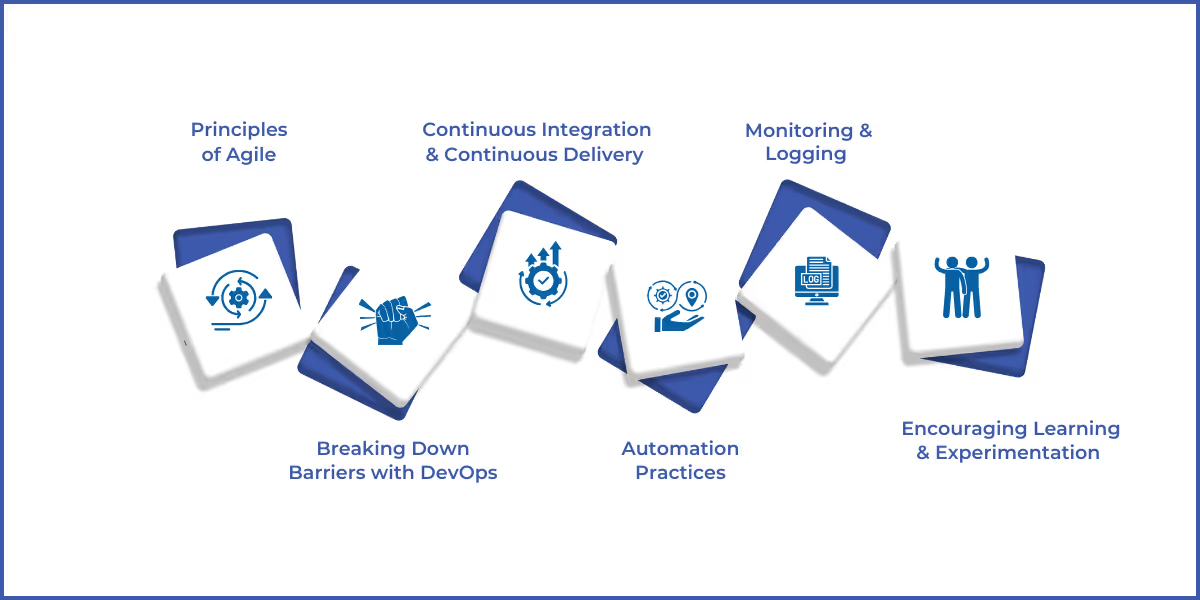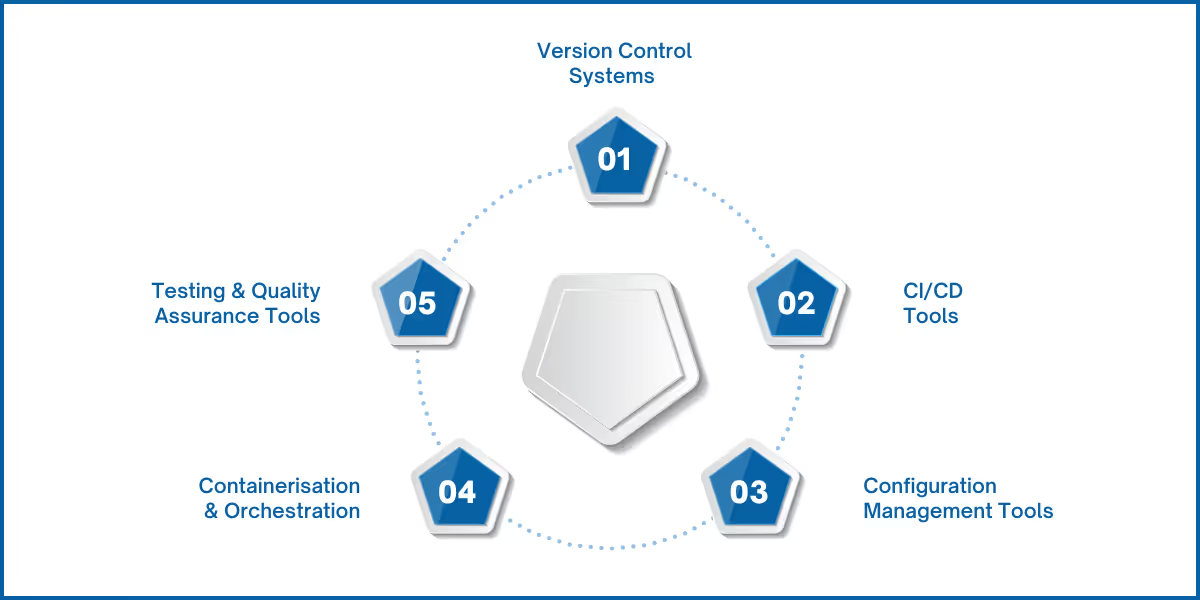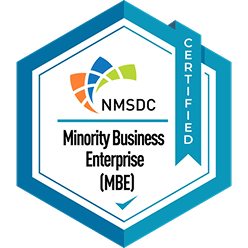


Speed is the ultimate competitive weapon in software delivery—every second saved accelerates customer value, outpaces competitors, and strengthens market positioning. According to the 2024 state of DevOps report, organizations with high DevOps performance are significantly more likely to exceed their profitability and market share goals.
The faster you deliver, the sooner your customers benefit, and the further ahead you stay from competitors. But here’s the catch: speed without strategy often leads to chaos. Missed deadlines, fragile releases, and overwhelmed teams are symptoms of a broken delivery process. The challenge isn’t just about working faster but working smarter.
That’s where Agile and DevOps come in. These methodologies aren’t just trends but transformative approaches that redefine how teams build, deliver, and maintain software. They simplify complexity, align teams, and enable you to achieve accelerated software delivery while maintaining stability and quality.
In this article, we’ll cut through the jargon and explore how Agile and DevOps can revolutionize your delivery pipeline.
Agile DevOps combines Agile’s focus on customer needs with DevOps’ automation capabilities. It creates a smooth process for developing and delivering software by eliminating bottlenecks and aligning teams around shared goals.
The biggest advantage of Agile DevOps is how it encourages collaboration. Development and operations teams work together, with shared responsibilities and faster feedback. This approach helps teams achieve accelerated software delivery by reducing delays and ensuring updates, fixes, and features are delivered quickly and reliably.
When CI (Continuous Integration) and CD (Continuous Delivery) are added, Agile DevOps becomes even more powerful. These practices automate testing, integration, and deployment, simplifying the process while maintaining high quality. With Agile DevOps, organizations can deliver smarter, faster, and more reliable software that meets business needs and customer expectations.
To understand how Agile DevOps works in practice, it is necessary to investigate its fundamental components and how they promote efficiency and collaboration. Let’s look at the key components that make Agile DevOps a disruptive approach to software development.

Creating an efficient Agile DevOps system requires more than tools; it demands a shift in mindset. Agile DevOps creates a quick, dependable, and scalable delivery pipeline by fusing flexibility, automation, and teamwork to produce software more quickly while maintaining a high-quality standard.
1. Principles of Agile
Agile promotes iterative development, constant customer feedback, and quick adjustments to changing requirements. It encourages teams to focus on delivering value in smaller, manageable increments rather than waiting for a single large release.
2. Breaking Down Barriers with DevOps
DevOps eliminates silos between development and operations teams. It fosters a culture of collaboration, where teams share accountability for delivering high-quality software. DevOps ensures smoother workflows and quicker problem resolution by aligning goals and removing communication gaps.
3. Continuous Integration and Continuous Delivery (CI/CD)
CI/CD ensures that code is tested and deployed automatically at every stage of development. This reduces errors, improves efficiency, and enables faster releases. It’s the heartbeat of Agile DevOps, enabling teams to respond to changes with speed and confidence.
4. Automation Practices
Automation is at the core of Agile DevOps. From testing and integration to deployment, automating repetitive tasks saves time and reduces human error. It allows teams to focus on innovation while ensuring consistent and reliable results across every iteration.
5. Monitoring and Logging
Effective monitoring and logging give teams real-time insights into system performance. These practices ensure that potential issues are detected early and resolved before they affect users. Continuous visibility into the system improves reliability and builds trust with stakeholders.
6. Encouraging Learning and Experimentation
Agile DevOps thrives on innovation, which comes from a culture of learning and experimentation. Teams are encouraged to test new ideas, evaluate outcomes, and iterate. This mindset improves continuous improvement and keeps businesses competitive in a fast-changing market.
At the core of Agile DevOps lies CI/CD, a process that drives automation, consistency, and speed. The following section explores how CI/CD powers seamless software delivery and ensures high-quality outcomes.
Agile DevOps revolutionizes software delivery by bridging the gap between speed and quality. Beyond its processes, it drives tangible benefits—reducing delays, improving collaboration, and enabling businesses to respond swiftly to customer needs and market demands.
The benefits of Agile DevOps are clear; its success relies heavily on the right tools and technologies. Next, we’ll explore the platforms and solutions that empower teams to execute Agile DevOps practices effectively.

The success of Agile DevOps relies heavily on the tools and technologies that support its practices. These tools form the backbone of a smooth and efficient delivery pipeline, helping teams streamline workflows, automate processes, and ensure high-quality results.
1. Version Control Systems
Version control systems like Git helps teams to manage code changes effectively. They allow developers to collaborate, track updates, and maintain a detailed history of modifications, reducing errors and ensuring consistency across projects.
2. CI/CD Tools
CI/CD tools such as Jenkins, Azure DevOps, and GitLab automate integration and deployment processes. These tools ensure that code changes are tested and deployed quickly, maintaining stability and reducing manual errors.
3. Configuration Management Tools
Tools like Ansible, Puppet, and Chef simplify the management of infrastructure and application settings. By automating configurations, these tools prevent inconsistencies and enable reliable deployments across environments.
4. Containerisation and Orchestration
Technologies like Docker and Kubernetes play a critical role in packaging and managing applications. They ensure that applications run seamlessly across different environments while simplifying scaling and resource management.
5. Testing and Quality Assurance Tools
Testing tools such as Selenium and JUnit ensure code quality through automated testing. These tools help identify bugs early and provide valuable insights into performance and functionality, enabling teams to deliver reliable software.
Implementing Agile DevOps begins with a strong understanding of its principles and the right tools. Let’s learn how to get started and lay the foundation for success.
A clear, actionable strategy ensures your organization can eliminate bottlenecks, improve collaboration, and confidently achieve accelerated software delivery.
Start by ensuring your teams understand the core principles of Agile and DevOps. Agile focuses on adaptability and delivering value in increments, while DevOps bridges development and operations through collaboration and automation. A shared understanding lays the foundation for success.
Before implementing changes, assess your organization’s current processes, tools, and team structures. Identify bottlenecks, inefficiencies, and gaps that Agile DevOps can address. A clear baseline helps track progress and ensures alignment with business goals.
Agile DevOps thrives on collaboration. Assemble a cross-functional team that includes developers, testers, operations staff, and project managers. This team will share responsibility for delivery, fostering ownership and accountability across departments.
Introduce Agile methodologies such as Scrum or Kanban to promote iterative development. Use sprints to deliver work in manageable increments, ensuring constant feedback and improvement. These practices help your team stay aligned and adapt quickly to changing priorities.
Choose tools that align with your goals. Version control, CI/CD pipelines, configuration management, and containerization tools play key roles in automating workflows and maintaining consistency. A well-integrated tech stack reduces manual effort and increases efficiency.
A successful Agile DevOps implementation depends on a culture that values growth. Encourage experimentation, accept failures as learning opportunities, and invest in upskilling your team. Continuous learning drives innovation and helps teams adapt to new challenges.
Accelerating software delivery is no longer an option but a requirement for firms looking to stay ahead. Agile DevOps has proven to be the cornerstone for streamlining workflows, improving collaboration, and ensuring consistent delivery of high-quality software. However, implementing it effectively requires the right strategy, tools, and expertise.
At WaferWire, we specialize in empowering organizations to achieve accelerated software delivery through tailored Agile DevOps solutions. We work directly with your teams to create, implement, and improve workflows that are consistent with your goals. Our end-to-end services ensure that you’re not just adopting a methodology but building a sustainable system that drives innovation and long-term success.
Let’s work together to transform your software delivery process. Whether you’re looking to reduce costs, improve efficiency, or scale seamlessly, we’re here to guide your journey. Contact us today to learn how we can help your organization thrive.

